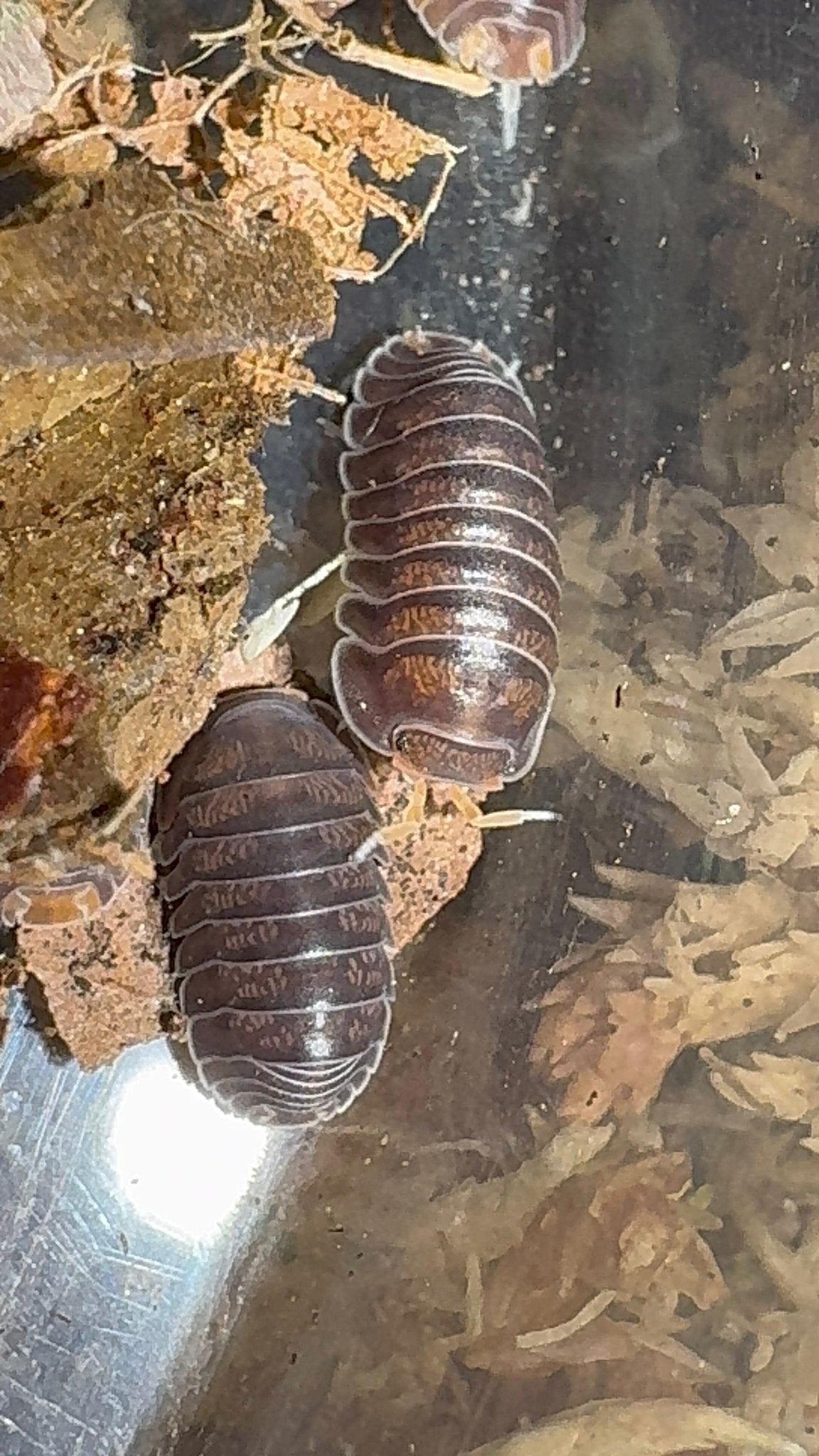Do you need to change your substrate? Yes, but how and how often all depends on your enclosure.
Why do isopods need substrate?
For isopods, substrate is the thing that we need for them to live in, shelter, home, as well as the bulk of their diet, where they find their moisture, and a space to breed. It's also the thing that regulates the humidity, and a place for plants and so much more.
What is substrate?
We think of substrate as being soil. But soil, and the life cycles it supports, in the wild, is a complex masterpiece of natural engineering. Undisturbed by digging soil can tell the story of the season. The rocks of the area are the first part of that story, weathered into tiny particles that make up a large part of the soil, then the layers of organics. Seasonal leaf fall, floods, animal waste, and all the other sources of organics form the layers of the soil.
In the wild, and in our enclosures, there is a soil level ecosystem of animals turning those fallen organics into ingredients in this soil, allowing plants to use those nutrients to provide more food. This enrichment of these layers creates the foundation for so much life on Earth.
But it's impossible to go out and buy those layers, instead we need to create it, and alter it for the much smaller space that our isopods live in. Many of the mixes we can buy have been created for hydroponics, where the minerals and other nutrients are added along with the water. More complete substrates are a lot more expensive.
Thankfully, a good quality bioactive substrate and leaf litter and your isopods will be working away to create a natural substrate almost immediately. But after all that effort, do you want to be throwing any away?
Changing the substrate in a vivarium
Do you need to change your substrate in your vivarium, or is it a case that once it's in, you can leave it there forever? Substrate isn’t cheap, and it’s a complex structure that no one wants to be replacing regularly.
The good news is that it doesn’t have to be a regular thing. It really all depends on what you’ve got and if you are seeing any issues. But there will be times that you need to replace some, or at least add to, the substrate in your enclosure.
Why might you need to change your substrate?
One concern about the substrate never being changed is that there will be a buildup of bacteria and fungi that can overwhelm the enclosure and become an issue. Moulds are also a significant concern. If your substrate is taken over by any of these, then you will have to replace some, if not all, of the substrate.
Even if everything looks well, it's still a good idea to replace some of the substrate regularly. One option is to take out about ¼ of the substrate every three months. This will remove some of the negative pathogens and add fresh minerals and nutrition. For smaller enclosures, it's a good idea to swap out the substrate more regularly, but there are so many variables that it's almost impossible to give you a hard and fast rule.
How to avoid having to change your substrate
There are a lot of things that are building up in your substrate that even the best cleanup crew can't deal with. Frass is always going to be an issue. But you can at least reduce the amount you need to replace.
Plants, especially fast-growing ones, will use some of the waste products and introduce bacteria that will contribute to breaking down the waste.
Other clean-up crews alongside isopods will help; those can include springtails, various snails, and a range of insects. They will help to a certain extent, although they will also add their own waste.
The reality is that you will have to replace some of the substrate at some point. The easiest option is to remove small amounts regularly.
Replacing the substrate in tubs or small enclosures
If the enclosure is just for isopods, and there isn't space for plants and other things, then you will have to replace your substrate more often. As soon as you see a buildup of frass, you know that you need to replace the substrate.
How to remove substrate without taking out the isopods
It's difficult to remove substrate without taking out the isopods, especially when you have a range of ages in the colony. The simplest option is to split the growing colony in two, put half the substrate, etc., in a new, similarly sized enclosure and top up the substrate in both enclosures. Admittedly, you will have to do this every time, but I'm assuming here that your colony is also growing at the same time.
If you can't do that for a variety of reasons, one option is to move all your isopods to a new clean container. Moving cork bark hides and most of the leaf litter will mean you've moved most of the adults. But that will leave mancae in the substrate. You can set traps of sorts, pushing small containers into the substrate and putting food in the bottom of the container, the idea being they can climb in, but not climb out. The other option is to go through the substrate carefully and transfer any more you find to the new enclosure.
If you are taking substrate out of a larger enclosure and you're worried about removing isopods, then you can put the substrate in a container and try and trap any isopods you see, or sort through it carefully to remove any that you've removed with the soil, etc.
Changing substrate isn’t fun, but it’s well worth planning how and what you’re going to do when you set up the enclosure to make the job easier down the road.









